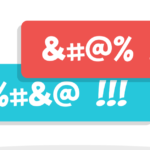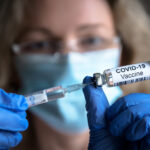‘Krokodil’ Coming to Australia

The terrifying flesh-eating drug ‘krokodil’ looks set to enter the Sydney market.
NSW Police have issued warnings over its dangers, following the ravaging effects of the drug on users in Russia and the US (see images here).
What is Krokodil?
Krokodil is the street name for desomorphine, a drug which is said to be 8 to 10 times as potent as morphine – the drug from which it is derived.
The synthetic opiate desomorphine is almost identical in structure to heroin. Over the counter medications containing codeine can be used to make the drug, which costs just one-tenth the price of heroin. Whereas heroin can cost $US 150 per dose, krokodil can be purchased for just $US 6 to 8 per injection.
The associated high is reported to be similar to heroin, but does not last as long. While heroin can last 4 to 8 hours, krokodil users are generally only high for an hour and a half or less, with withdrawal symptoms quickly kicking-in thereafter.
Dangers of Krokodil
Krokodil users are often forced to chase their high every few hours – and while the drug can be manufactured in a kitchen using over the counter ingredients in just 30 minutes – users report constantly having to cook and use the drug to stave off the powerful withdrawal effects.
Withdrawal symptoms are said to be far more acute than heroin, lasting up to a month.
Extremely strong tranquilizers are used during withdrawal to prevent users from passing out from the pain. Doctors say krokodil causes the strongest level of addiction of any drug, and is the most difficult to overcome. Side effects can be permanent – with some users left with lifetime speech impediments, a constant vacant gaze and erratic movements.
Substances used to produce krokodil in a kitchen setting can be deadly – with manufacturers sometimes turning to gasoline as a solvent, along with red phosphorous, iodine, and hydrochloric acid as reactants to synthesise desomorphine from codeine tablets.
The result is an impure, orange-coloured liquid that causes severe skin irritation, tissue destruction and can even lead to gangrene. The drug’s name derives from its physical effects – including severe skin peeling and flesh rotting to the bone in serious cases.
Where does it come from?
Krokodil is believed to have originated in Russia, where codeine was previously readily available without a prescription.
Russian media attributes this lack of regulation to close links between a pharmaceutical company which manufactures popular codeine medications and Russia’s federal health minister.
Seizures of the drug in Russia grew 50-fold from two kilograms in 2006 to 100 kilograms in 2011. It was only in June 2012 that the Russian government restricted access to codeine medications, and although this slowed production, the drug had already become popular across the country.
Russia’s lack of state-sponsored rehabilitation programs is believed to have contributed to widespread addiction, with private facilities lacking the required funding to deal with what has been described as an ‘epidemic’.
Road to Australia
The use of krokodil spread from Russia to western Europe and the United States, and is now spreading further abroad.
NSW police are concerned by reports of the drug being used in our state, with a senior officer saying it’s only a matter of time before krokodil takes hold locally.
“What’s so scary about it is the precursors are readily available and they can cook it up at home, you don’t need sophisticated clandestine labs — and it’s more addictive than ice,” a senior officer said.
“It’s two years from addiction to death.”
Penington Institute CEO John Ryan says a local shortage in heroin could lead users to turn to krokodil as an alternative.
Krokodil’s ease of production, low cost and horrific side-effects have police concerned it may create even bigger social problems than drugs like ice.






